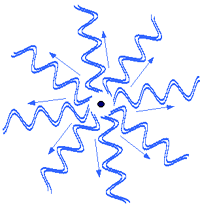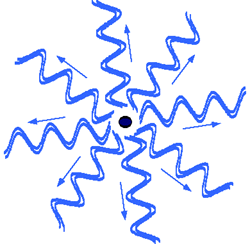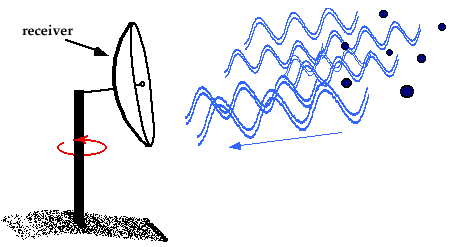|
|
. |
Scattering of a Radar Pulse
by a target back to the receiver
|
When a pulse encounters a target... |
|

|
|
it is scattered in all directions.
Of interest is the signal component received back at the radar.
This signal is typically much weaker than the original sent from
the transmitter and is called the "return signal". |
|

|
|
The larger the target, the stronger the scattered signal.
| |

|
The more targets there are to scatter the pulse, the stronger
the return will be because the return signals from each target
combine to produce a stronger signal.
This means that many large
raindrops will produce a stronger return than a few
small raindrops.
The quantity that a radar measures is the returned power
which, with knowledge of other radar characteristics,
is converted to a quantity called the
reflectivity factor, or more simply, the "reflectivity".

The magnitude of the
reflectivity is related to the number and size of the drops
encountered by the electromagnetic pulse.
For this reason,
high reflectivity generally implies heavy precipitation while low
reflectivity implies lighter precipitation.
Plots of the radar
reflectivity, typically using colors to depict its magnitude,
show both the location and intensity of precipitation.
Extremely high
reflectivities often indicate hail.

wave properties
|
|

wavelength effects
|
|




